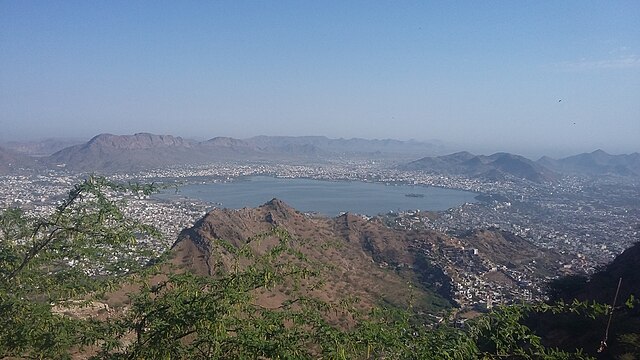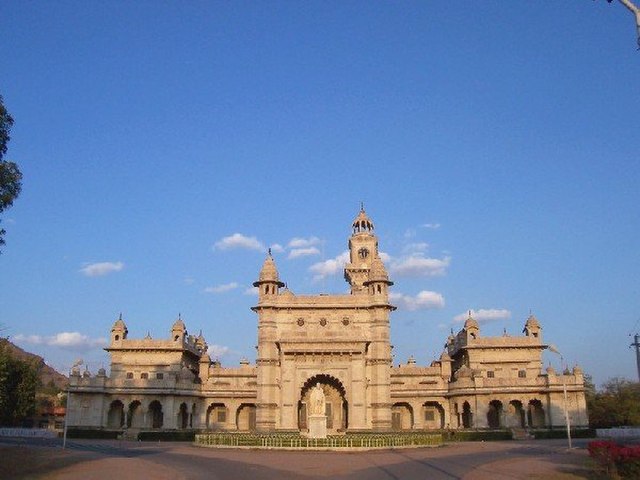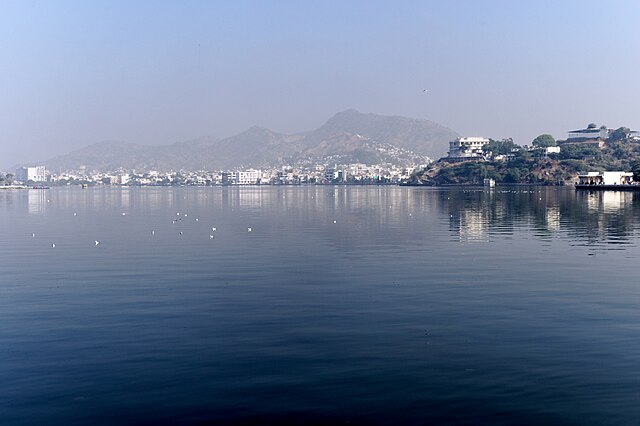Have you ever wondered what makes Ajmer’s weather so unique? Nestled in the heart of Rajasthan, this holy city experiences a fascinating blend of desert climate and seasonal variations that can surprise even seasoned travelers. Whether you’re planning a pilgrimage to the famous Ajmer Sharif Dargah or exploring the rich history of this ancient city, understanding Ajmer’s temperature patterns is crucial for a comfortable visit.
Understanding Ajmer’s Geographic Location and Climate
Where is Ajmer Located?
Ajmer sits strategically in the center of Rajasthan, approximately 130 kilometers southwest of Jaipur. This positioning places it right in the middle of the Thar Desert’s influence zone, yet it’s blessed with the Aravalli Hills providing some natural barriers against extreme weather conditions. The city’s elevation of about 486 meters above sea level plays a significant role in moderating its temperature compared to other desert cities in Rajasthan.
Think of Ajmer as nature’s balancing act – it’s close enough to the desert to experience its characteristic hot, dry climate, yet elevated and positioned just right to avoid the most extreme temperature swings you’d find in deeper desert regions.
Climate Classification of Ajmer
Ajmer experiences what meteorologists classify as a hot semi-arid climate, also known as a BSh climate according to the Köppen climate classification system. This means the city gets limited rainfall, experiences significant temperature variations between seasons, and has generally dry conditions throughout the year.
What does this mean for you as a visitor? You’ll encounter three distinct seasons: a scorching hot summer, a brief but intense monsoon period, and a pleasantly cool winter. Each season brings its own character and challenges to this historic city.
Ajmer Temperature Throughout the Year
Winter Temperature in Ajmer (December to February)
Winter in Ajmer is like a gentle embrace after the harsh summer months. During this period, daytime temperatures hover comfortably between 20°C to 25°C (68°F to 77°F), making it perfect for sightseeing and outdoor activities. However, don’t let the pleasant days fool you – nights can be surprisingly chilly, with temperatures dropping to as low as 5°C to 8°C (41°F to 46°F).
December marks the beginning of the cool season, with average temperatures ranging from 8°C to 23°C. January is typically the coldest month, where you might wake up to foggy mornings and need a warm jacket. February starts showing signs of warming up, preparing for the upcoming spring season.
Spring Temperature Patterns (March to April)
Spring in Ajmer is brief but beautiful, lasting roughly from March to early May. This transitional period sees temperatures gradually climbing from the comfortable winter levels to the intense summer heat. March temperatures typically range from 15°C to 30°C (59°F to 86°F), while April pushes the mercury higher, reaching 20°C to 35°C (68°F to 95°F).
This is when Ajmer truly shines – the weather is warm enough to enjoy outdoor activities without the overwhelming heat of summer. The city comes alive with festivals and cultural events during this period, taking advantage of the pleasant weather conditions.
Summer Heat in Ajmer (May to June)
Summer in Ajmer is not for the faint-hearted. From May through June, the city experiences its most challenging weather conditions, with temperatures soaring between 25°C to 45°C (77°F to 113°F). The peak summer months can see the mercury touching 47°C (117°F) on particularly harsh days.
May marks the beginning of the intense heat, with average highs around 40°C (104°F). June is typically the hottest month, where stepping outside during midday feels like opening an oven door. The heat is dry and relentless, with minimal cloud cover providing little relief.
Monsoon Season Temperature (July to September)
The arrival of monsoon in Ajmer is like nature’s air conditioning system kicking in. While the rains bring much-needed relief from the scorching heat, they also introduce humidity to the equation. During monsoon months, temperatures typically range from 24°C to 35°C (75°F to 95°F).
July usually sees the first significant rainfall, immediately dropping temperatures by 5-10 degrees. August is the wettest month, with heavy downpours providing dramatic temperature relief. September marks the gradual retreat of monsoon, with intermittent showers and pleasant temperatures.
Post-Monsoon Weather (October to November)
Post-monsoon Ajmer offers some of the most delightful weather conditions of the year. October and November see temperatures ranging from 18°C to 32°C (64°F to 90°F), with clear skies and comfortable humidity levels. This period is characterized by crisp mornings, warm afternoons, and cool evenings.
October still carries some monsoon influence, with occasional light showers and pleasant temperatures. November is particularly beautiful, with crystal-clear skies and perfect weather for exploring the city’s numerous attractions.
Monthly Temperature Breakdown

January to March Temperature Trends
The first quarter of the year in Ajmer represents the most comfortable period for visitors. January temperatures typically range from 5°C to 22°C (41°F to 72°F), making it ideal for early morning visits to religious sites and outdoor exploration. February sees a slight warming trend, with temperatures ranging from 8°C to 26°C (46°F to 79°F).
March begins the transition toward warmer weather, with temperatures climbing to 15°C to 30°C (59°F to 86°F). This is when you’ll notice the days becoming noticeably warmer, though evenings remain pleasant and comfortable.
April to June: The Hot Season
April marks the beginning of Ajmer’s challenging period, with temperatures ranging from 20°C to 35°C (68°F to 95°F). May intensifies the heat significantly, pushing temperatures to 25°C to 42°C (77°F to 108°F). June represents the peak of summer fury, with temperatures often exceeding 45°C (113°F) during the day.
During these months, the temperature difference between day and night remains significant, though even nighttime temperatures can be uncomfortably warm, rarely dropping below 28°C (82°F) in peak summer.
July to September: Monsoon Relief
The monsoon months bring dramatic temperature relief to Ajmer. July sees temperatures dropping to 24°C to 35°C (75°F to 95°F), though humidity levels increase substantially. August maintains similar temperature ranges while delivering the heaviest rainfall of the year.
September begins the gradual retreat of monsoon influence, with temperatures ranging from 22°C to 34°C (72°F to 93°F) and decreasing humidity levels. This month often provides the perfect balance of moderate temperatures and clear skies.
October to December: Pleasant Weather Returns
October brings some of the year’s most pleasant weather, with temperatures ranging from 18°C to 32°C (64°F to 90°F). November continues this trend with 12°C to 28°C (54°F to 82°F), offering ideal conditions for tourism and outdoor activities.
December completes the annual cycle with temperatures dropping to 8°C to 24°C (46°F to 75°F), setting the stage for another comfortable winter season.
Factors Affecting Ajmer’s Temperature
Altitude and Topography
Ajmer’s elevation of 486 meters above sea level plays a crucial role in moderating its temperature compared to lower-lying desert areas. This altitude provides natural cooling, especially during summer months, making temperatures more bearable than they would be at sea level.
The surrounding Aravalli Hills create a microclimate effect, providing some protection from extreme weather patterns. These ancient mountains act as natural barriers, influencing wind patterns and precipitation distribution around the city.
Desert Influence from Thar Desert
The proximity to the Thar Desert significantly impacts Ajmer’s temperature patterns. The desert’s massive thermal mass creates extreme temperature variations between day and night, contributing to the city’s characteristic hot days and relatively cooler nights.
Desert winds, particularly during summer months, can push temperatures even higher while creating dust storms that affect visibility and air quality. However, the same desert influence helps create clear, dry conditions during winter months.
Monsoon Impact on Temperature
The Southwest Monsoon system dramatically alters Ajmer’s temperature patterns during July through September. The arrival of moisture-laden winds from the Arabian Sea brings immediate temperature relief, though it also introduces humidity that can make the weather feel oppressive.
The monsoon’s intensity varies year by year, directly affecting how much temperature relief the city receives. Strong monsoon years provide better cooling, while weak monsoon years leave the city struggling with extended periods of heat.
Best Time to Visit Ajmer Based on Temperature

Peak Tourist Season Weather
The ideal time to visit Ajmer is during the winter months from November to March when temperatures are most comfortable for tourists. During this period, daytime temperatures range from 20°C to 28°C (68°F to 82°F), perfect for exploring the city’s attractions without weather-related discomfort.
This peak season offers the best balance of pleasant days and cool nights, making it ideal for both religious pilgrimages and cultural tourism. The clear skies and minimal rainfall during these months provide excellent conditions for photography and outdoor activities.
Off-Season Travel Benefits
While summer months (April to June) present challenging temperature conditions, they also offer unique advantages for budget-conscious travelers. Hotel rates drop significantly, attractions are less crowded, and you can experience the authentic rhythm of local life.
Monsoon season (July to September) provides dramatic temperature relief and transforms the landscape into a lush, green paradise. Though humidity can be high, the cooler temperatures and occasional dramatic weather can create memorable travel experiences.
Temperature Records and Extremes
Highest Recorded Temperatures
Ajmer has recorded some truly extreme temperatures over the years. The highest recorded temperature reached approximately 49.2°C (120.5°F) during an intense heat wave in May. These extreme temperatures typically occur during pre-monsoon periods when hot, dry winds from the desert create furnace-like conditions.
Such extreme temperatures are rare but serve as reminders of the city’s challenging summer climate. Weather stations in Ajmer consistently record temperatures above 45°C (113°F) during peak summer months, making it one of the hotter cities in Rajasthan.
Lowest Temperature Records
On the opposite end of the spectrum, Ajmer has experienced surprisingly cold temperatures during severe winter conditions. The lowest recorded temperature dropped to approximately 1°C (34°F) during an unusually harsh winter, though such extremes are rare.
More commonly, winter temperatures in Ajmer drop to around 3°C to 5°C (37°F to 41°F) during the coldest nights in December and January. These cold snaps usually last only a few days but can catch unprepared visitors off guard.
How to Prepare for Ajmer’s Weather
Clothing Recommendations by Season
Winter visits to Ajmer require layered clothing to handle the significant temperature variations between day and night. Pack warm jackets or sweaters for early mornings and evenings, but keep lighter clothes for comfortable afternoons. Cotton and wool blend fabrics work best during this season.
Summer visits demand lightweight, breathable fabrics in light colors to reflect heat. Loose-fitting cotton clothes, wide-brimmed hats, and UV-protective sunglasses are essential. Don’t forget to pack light scarves to protect against hot desert winds and dust storms.
Monsoon season requires waterproof clothing and sturdy, quick-drying footwear. Pack both rain gear and light cotton clothes, as temperatures can fluctuate based on rainfall intensity. Humidity during this period makes synthetic fabrics uncomfortable.
Health Precautions for Extreme Temperatures
Extreme summer temperatures in Ajmer require serious health precautions. Stay hydrated by drinking water regularly, even if you don’t feel thirsty. Avoid outdoor activities during peak heat hours (11 AM to 4 PM) and seek air-conditioned spaces when possible.
Heat exhaustion and heatstroke are real risks during summer months. Recognize symptoms like dizziness, nausea, and excessive sweating. Always carry oral rehydration salts and electrolyte supplements when venturing out during hot weather.
Winter months, while pleasant, can catch people off guard with sudden temperature drops. Respiratory issues can worsen in cold, dry air, so pack appropriate medications and warm clothing for early morning and late evening activities.
Climate Change Impact on Ajmer Temperature

Climate change is gradually affecting Ajmer’s temperature patterns, with recent years showing increased frequency of extreme weather events. Summer temperatures are becoming more intense, while winter periods are showing slight warming trends compared to historical averages.
Rainfall patterns are also shifting, affecting the monsoon’s cooling impact on temperatures. Some years experience delayed monsoons, extending the harsh summer period, while others see intense rainfall that can cause flooding and humidity spikes.
Local meteorological data suggests that average annual temperatures in Ajmer have increased by approximately 0.5°C to 1°C over the past two decades, consistent with global warming trends affecting the Indian subcontinent.
Local Weather Patterns and Microclimates
Ajmer experiences interesting microclimate variations within the city limits. Areas near Ana Sagar Lake tend to be slightly cooler due to the water body’s moderating effect on local temperatures. The lake creates its own microclimate, with increased humidity and marginally lower temperatures during summer months.
The old city areas, with their narrow lanes and traditional architecture, often experience higher temperatures due to reduced air circulation and urban heat island effects. In contrast, newer residential areas with wider roads and green spaces tend to have better air circulation and slightly more moderate temperatures.
Higher elevation areas within Ajmer, particularly those closer to the Aravalli foothills, experience cooler temperatures throughout the year. These areas often serve as natural retreats for locals during extreme summer conditions.
Conclusion
Understanding Ajmer’s temperature patterns is essential for anyone planning to visit this historically significant city. From the pleasant winter months that offer ideal touring conditions to the challenging summer heat that tests even the most prepared travelers, Ajmer’s climate tells a story of extremes and seasonal beauty.
The city’s unique position between desert and hills creates a complex weather pattern that influences everything from daily life to tourism patterns. While summer temperatures can be formidable, reaching heights that challenge human comfort, the winter months provide some of India’s most pleasant weather conditions.
Whether you’re drawn to Ajmer for its spiritual significance, historical importance, or cultural richness, timing your visit according to temperature patterns will significantly enhance your experience. The key is understanding that each season offers its own unique character – from winter’s crisp clarity to monsoon’s dramatic relief and summer’s intense but authentic desert experience.
Remember that weather patterns can be unpredictable, and it’s always wise to check current forecasts before traveling. But with this comprehensive understanding of Ajmer’s temperature patterns, you’re well-equipped to plan a visit that maximizes comfort while minimizing weather-related challenges.
Frequently Asked Questions
1. What is the hottest month in Ajmer and how hot does it get?
June is typically the hottest month in Ajmer, with temperatures regularly reaching 45°C to 47°C (113°F to 117°F). The extreme heat is dry and intense, making outdoor activities during midday hours quite challenging. The hottest part of the day usually occurs between 1 PM and 4 PM.
2. When is the best time to visit Ajmer considering the temperature?
The best time to visit Ajmer is from November to March when temperatures are most comfortable, ranging from 8°C to 28°C (46°F to 82°F). December and January offer the coolest weather, while February and March provide warm, pleasant days perfect for sightseeing and outdoor activities.
3. How cold does Ajmer get during winter nights?
Winter nights in Ajmer can be surprisingly cold, with temperatures dropping to 3°C to 8°C (37°F to 46°F). January is typically the coldest month, and visitors should pack warm clothing for early morning and evening activities, especially when visiting outdoor attractions or attending early morning prayers.
4. Does the monsoon season significantly cool down Ajmer’s temperature?
Yes, the monsoon season (July to September) provides substantial temperature relief, dropping average temperatures to 24°C to 35°C (75°F to 95°F) from the extreme summer highs. However, the increased humidity during monsoon can make the weather feel muggy, and the cooling effect varies depending on the intensity of rainfall each year.
5. How do Ajmer’s temperatures compare to other major cities in Rajasthan?
Ajmer’s temperatures are generally more moderate compared to desert cities like Bikaner or Jaisalmer due to its higher elevation and proximity to the Aravalli Hills. While it experiences similar seasonal patterns to cities like Jodhpur, Ajmer typically sees temperatures that are 2-4°C lower during peak summer months, making it relatively more comfortable than deeper desert locations.

